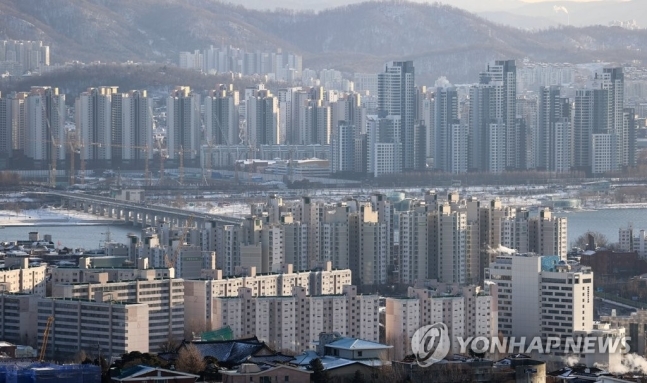
As early as the end of April, the floor area ratio of residential areas in urban areas will increase to 700%.
According to the Ministry of Land, Infrastructure and Transport on the 19th, the revision bill of the enforcement decree of the’Act on Planning and Utilization of the National Territory’ was decided at the State Council on the same day.
The revised bill made it possible to reduce the floor area ratio of residential areas by up to 700% with the district unit plan for complex use development in the station area to expand housing supply through high-density development in the station area.
Currently, among district unit plans under the National Territory Planning Act, there is a type of development that can be developed for mixed use that combines residential and commercial functions in the station area, but it can only be designated for quasi-residential, semi-industrial, and commercial areas, so it cannot be applied to general residential areas in the station area.
Accordingly, the amendment to the enforcement ordinance included general residential areas as targets for designation of district unit planning zones for the station area complex use development.
In addition, when the general residential area is changed to a quasi-residential area by the district unit plan, the floor area ratio can be reduced by up to 700%.
According to the current system, when a district unit plan is established, it is necessary to choose one of the two measures to increase the floor area ratio of the existing use area by up to two times, or to apply the increased floor area ratio after vertically increasing.
However, for example, in Seoul, the floor area ratio that can be increased by district-level plans for three types of general residential areas can only be reduced to a maximum of 400 to 500%, so there is a limit to high-density development in the station area.
The maximum floor area ratio of the three general residential areas in Seoul is currently 250%, because if it is doubled, the floor area ratio can be increased to 500%, and if it is vertically increased to a quasi-residential, the floor area ratio can only be increased to 400%, which is the semi-residential floor area ratio.
However, if a general residential area is upgraded to a quasi-residential while performing complex development in the station area, the exception is to raise it to 700%.
In order to increase the floor area ratio in quasi-residential areas, the height restrictions for securing mining, etc. under the Building Act can be relaxed by up to two times so that there is no problem with the application of the sunlight right regulation.
Currently, about 100 out of 300 railway stations, such as subway stations in Seoul, are near general residential areas, so all of these areas can benefit.
However, in order to return the increase in land value due to the reduction of the floor area ratio to the society, the proportion determined by the local government ordinance was required to be donated to public rental housing.
This system is expected to take effect three months after the date of promulgation of the revision of the enforcement decree and will be implemented from the end of April as early as possible.
Prior to the enforcement, local governments such as the Seoul Metropolitan Government will reflect the matters entrusted by the ordinance in the ordinance in the ordinance.
In addition, the establishment of growth management plans in the planned management area is induced.
In the future, among non-urban areas, in planned management areas where there is a high concern for difficult development, the location of factories or manufacturing establishments is allowed only if the local government has established a growth management plan in advance.
This is a response to concerns over difficult development due to the indiscriminate increase in factories located in the metropolitan area and non-urban areas in large cities.
In the planned management area, which occupies 11% of the land area, both houses and a large number of factories can be located according to the location standard of the negative method.
However, this content is implemented with a differential grace period from the date of promulgation to a maximum of 7 years from the date of promulgation for each local government, taking into account the period of time it takes for the local government to establish a growth management plan and the degree of regional development pressure.
Criteria for measuring the separation distance between residential areas and lodging facilities are clearly established.
In quasi-residential areas and commercial areas, lodging facilities and entertainment facilities must be separated from the residential area by more than the distance prescribed by the ordinance, but civil complaints arose because the measurement standard for the separation distance was unclear.
Accordingly, the revised enforcement decree required the same standards as the Building Act to be applied to the separation distance measurement standards for lodging and entertainment facilities.
(Photo = Yonhap News)
Copyrightⓒ Korea Economic Daily TV. All Rights Reserved. Unauthorized reproduction and redistribution prohibited
